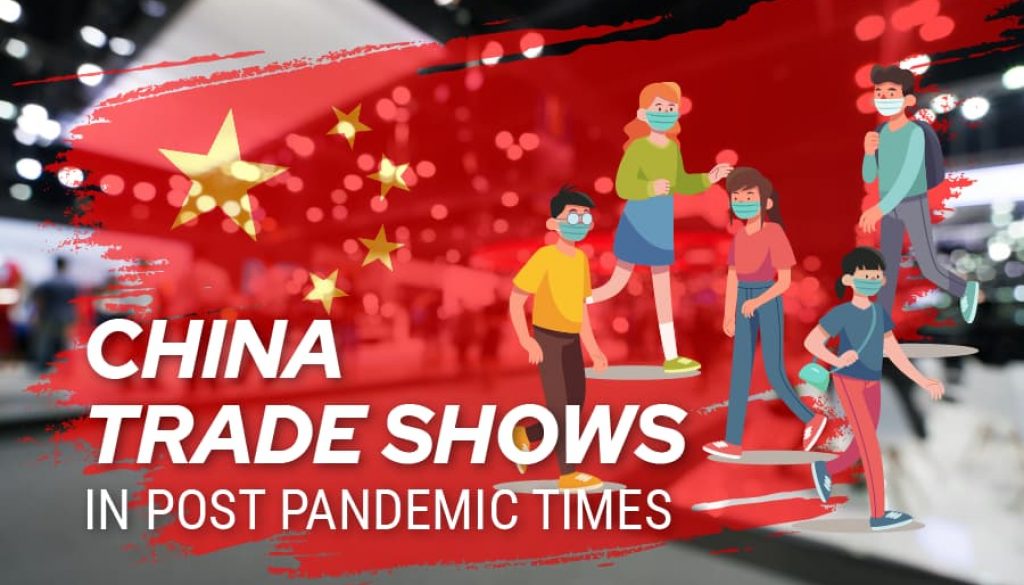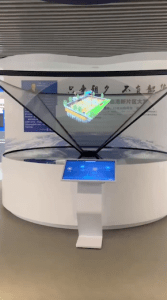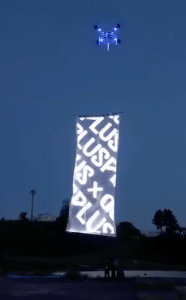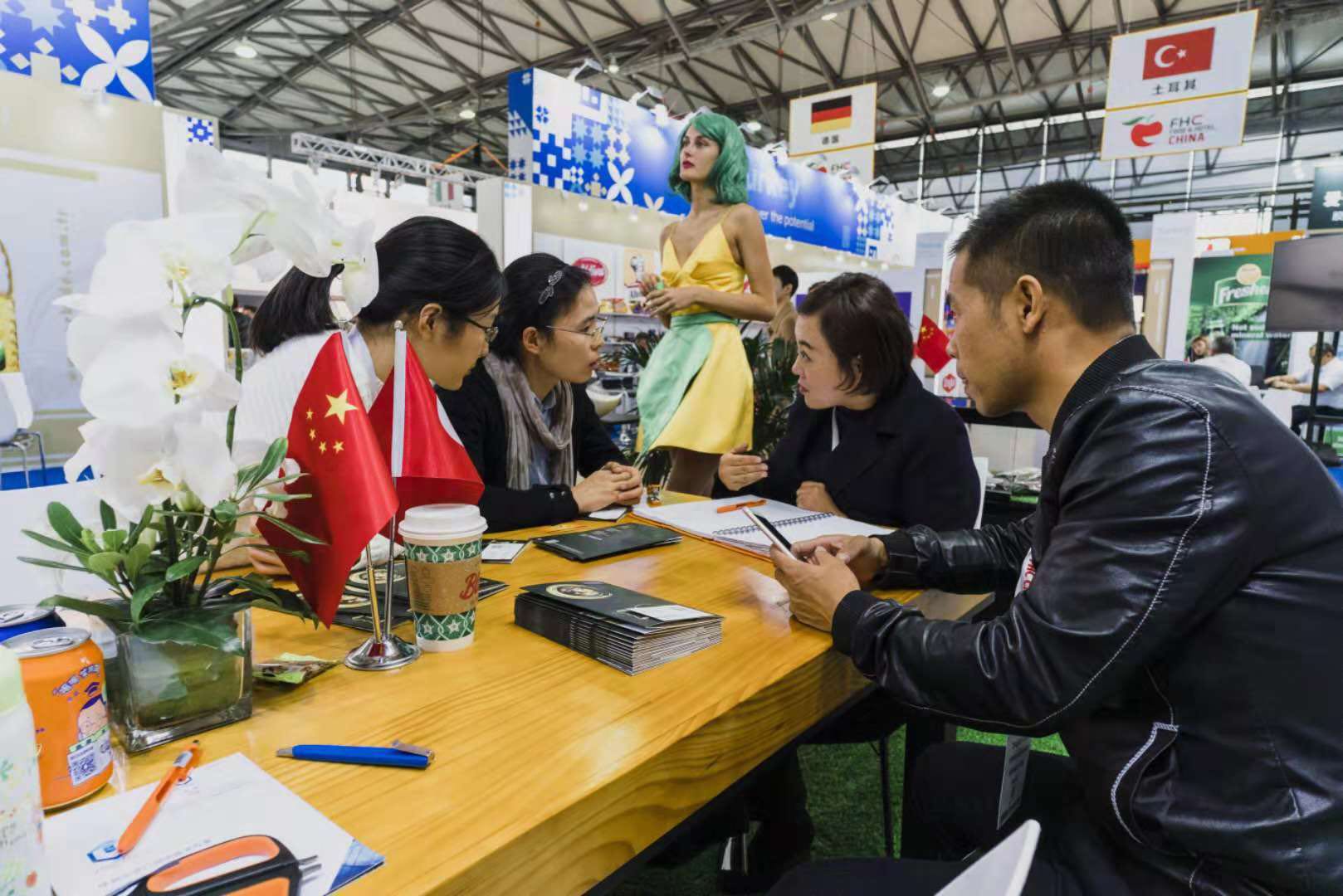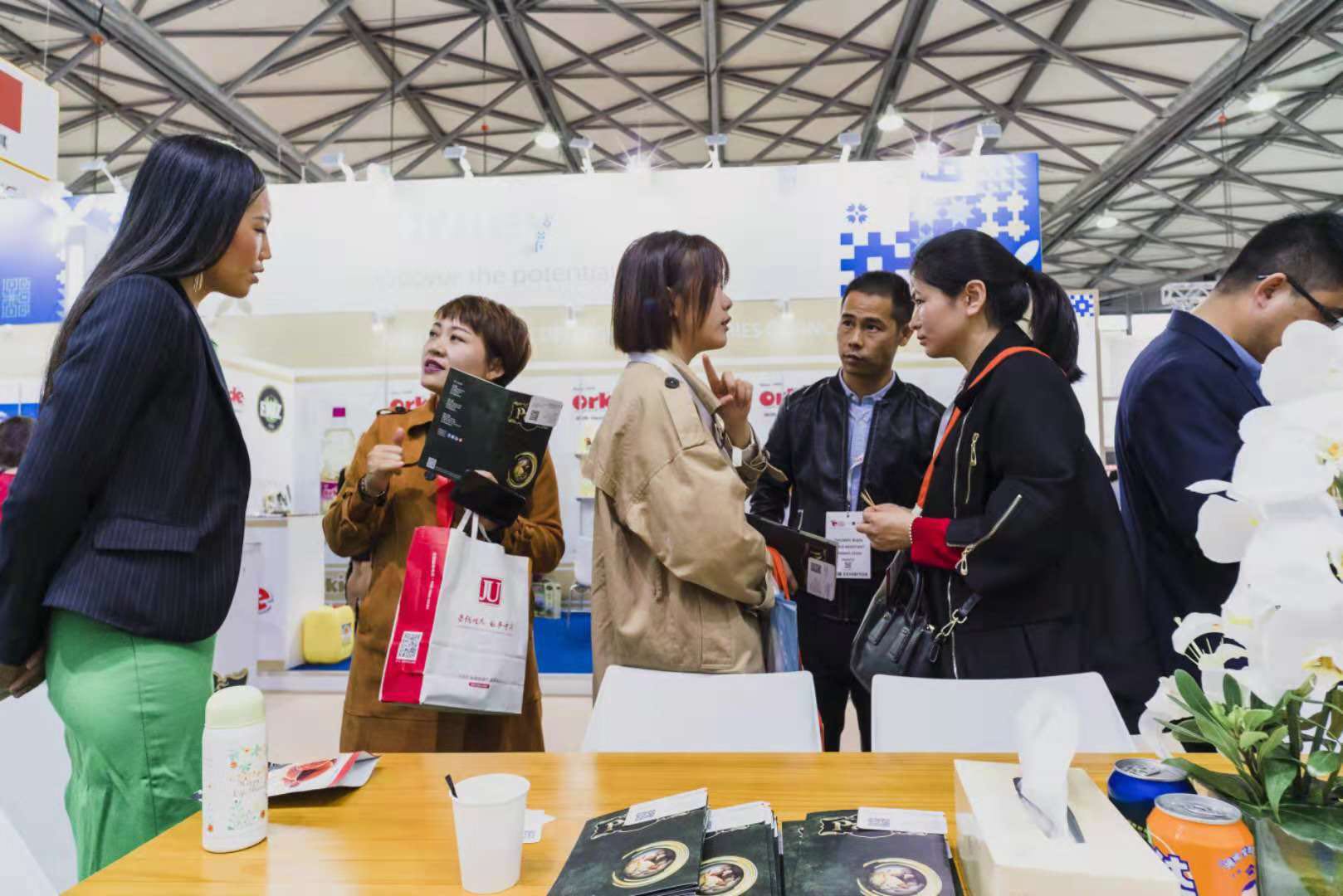Trade Shows in China 2024 – How to Prepare your business
What do you need to know about attending trade shows and exhibitions in China post-pandemic? How can you make sure your company is ready to face the world’s most digitally advanced customers and partners? What are the every-day obstacles for foreign guests in China? Let’s take a look together!
Participation in trade shows and exhibitions is great for creating leads and sales, as well as getting exposure in your industry. Trade shows are also great sources of knowledge where you can learn what’s happening in your industry. Some of the participants of Trade shows in China are government officials, media, influencers, large retail buyers, and hundreds of thousands of different business representatives.
If you have attended trade shows in the past, you’ve likely seen just how much goes into them. Businesses have displays (from standard sample shelved to fully operational chef-stations or robotic-productions), promotion teams and locally hired extra staff on-site, free samples and gifts for attendees, stand entertainment, and of course business reps, ready to talk endlessly about their products. There are events that take place within trade shows as well as in addition to them. Some events are hosted by the trade show organizers (seminars, awards, etc.), some events are hosted by country organizers (dinners, breakfasts, online forums), and some are organized by the exhibitors (customer appreciation dinners).
With all this in mind, there is an awful lot to prepare before attending an exhibition. The same is true when preparing to attend an exhibition in China.
To ensure you have all your bases covered, follow this detailed checklist to help make the most of your time.
What are the differences in Chinese and Western Trade shows? Chinese trends and attention grabbers
Canton Fair, CIIE, SIAL, and CBIE are some of the biggest trade shows in China. In fact, the Canton Fair is so large that it has been split into 2 seasons (Spring and Fall), with each one taking place in 3 phases of 5 days. The surface area taken up by each phase is so large that it would take one person 8 days straight just to make a very brief visit to each booth. Of course, not all exhibitions are so large, but if you’re not organized beforehand, you may end up wasting valuable exhibition time on issues such as staying too far away from the site, or insufficient transport.
Trade shows in China have lots of similarities to the ones is the West, especially in terms of organization of space. Some of the main differences are the digitalization of every possible step, from registration and badge use (a photo of a QR code of your badge is normally enough for access to all areas), to contact exchange (having your own WeChat account is crucial for exchanging contacts), to vendor management (order and payment of printing, food, express delivery and so on).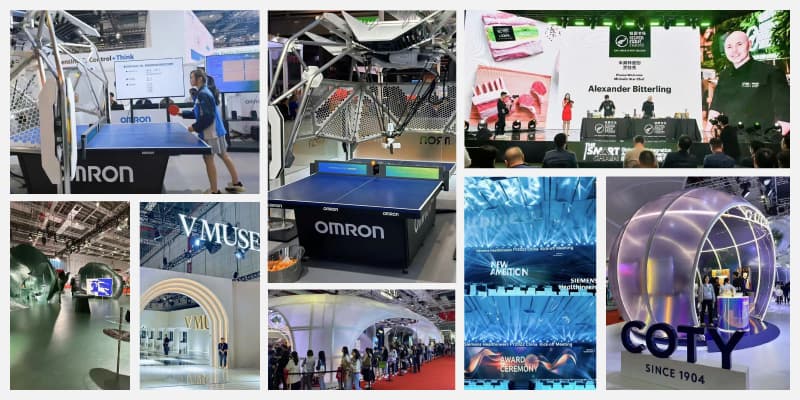
When it comes to booth preparation, you would probably need to spend lots of time on the design of the meeting space. But don’t forget that what you actually do in your booth and how you behave will also be noted by the guests and will leave a longer impression in their hearts. To gain extra attention, businesses use costumes and models, lottery activities, games, and shows (cooking/playing instruments/high tech entertainment).
Needless to say, having a local partner or agency to smooth all those aspects for you can be extremely useful, allowing you to focus on what you came to promote: your core business.
Click here to enquire about business assistance for your coming trade show.
What do you need to know before you come to an exhibition in China? Preparing your team for that big business trip to China
Personal necessities
In China there is generally no access to Google, Uber, Facebook, or WhatsApp.
You will need to make sure to get roaming when you arrive; even to access the airport WIFI, it’s necessary to have a phone number that works.
When you have a moment, download all the equivalent apps that you will need.
An alternative to Google that works well and is foreign-visitor friendly is Microsoft’s Bing.
Uber’s Chinese alternative is Didi; an English version of the app is also available.
WhatsApp is blocked in China, and people use WeChat. Make sure to add your most important contacts in China beforehand.
Maps – Google maps wont work in China but there are several other options.
If you are using your foreign SIM card with roaming – all the apps blocked by the firewall should work normally.
What can you do to promote your brand and your business in China?
Some of the larger brands host customer appreciation dinners or other events within the frame of exhibition, such as a standard dinner for existing and potential customers, or a lavish Business Awards evening.
Our Case study:
The Pollock Group (Russian Fishery) together with Pacific Rim have been engaged in a few interesting activities as part of the China Seafood Expo 2023.
They have used the PR possibilities and tools (provided by HI-COM) to ensure their business audience would hear their name one more time. The PR list provided included 15 most reliable and business oriented media names in their industry (including China Daily, Xinhua news, China Business portal, Tencent news, China food, etc).
Secondly, the company invited one of the most famous food influencers in Qingdao (where the expo was hosted), Hunrgy Monkey, to participate in an eating contest. His live stream generated more than 80,000 views.
And lastly, the the company hosted a Business Award banquet for 100 people. That event was created to celebrate the big return to the market and the end of Covid restrictions for their business. The event was greatly appreciated by their most loyal business partners and customers.
Business necessities
Before coming to China for an exhibition, you might want to translate your marketing materials, invitations, thank you letters, and name cards. A professional translation agency like HI-COM can even arrange for prints to be delivered directly to the booth.
Getting an interpreter is another task that should be addressed before you arrive. Professional translation agencies (such as HI-COM) will be able to shortlist the candidates according to your criteria. You might want to talk to the interpreter by phone before coming to make sure your expectations are met. Changing an interpreter last-minute may backfire.
If your companyn is serious about the Chinese market, it is advised to register a corporate account on Chinese social media such as a WeChat official account. This will serve as a localized mobile website, and news and update center for your company, as well as a newsletter service for your clients in China.
Having a WeChat official account will also show prospective customers that you know all about your market, and are here to stay. HI-COM is here to assist you with this task.
How to use WeChat for Message blast (sending one message to several hundreds of people at once)
If you would like to send invitations or thank-you letters to all your visitors at once via WeChat, here’s how to do it.
Step 1. Prepare the image. It must be an image. The app supports one image per blast.
Step 2. Go to WeChat–>Me–>Settings–>General–> WeChat tools–>Broadcast Message
*If you can’t find this function, update your app to the latest version.
Step 3. Click on ‘Send now’ and select people you want to send the message to. Then choose the image.
Step 4. Send.
Taking care of your online reputation before coming to China
Chinese businessmen are known for their tendency to double check every bit of available information. So, when they see your product for the first time, they will Baidu it (search for results on Baidu, a local equivalent of Google). But fear not! There is a way to put their minds at ease.
Take matters into your own hands and start working on your e-reputation in China before your brand or your booth arrives here.
Working on your e-PR list and content to be showcased can significantly multiply your success in China. This can be done similarly to how you would approach it in the West, by outreaching to media outlets in your niche with proposed articles for publishing.
HI-COM can help you to handle this by providing:
- PR List (suitable media)
- Registration of WeChat account (or other social media apps)
- Content creation in Chinese
- Cooperation with Livestreamers, Bloggers, KOLs and other talents
Getting help on-site at exhibitions in China
Most companies arrange their booth with the help of the organizer. Design, furniture, and samples can all be handled by the country representatives of the host exhibition. However some companies prefer to have that personal touch, which means they’ll be looking to put in extra effort and set up differently. These companies would need a local partner who can assist not only in setting up, but also in assisting you at the time of the event. For small emergencies such as running out of business cards, a local partner like HI-COM can give you a hand in most situations.
What can HI-COM provide for your booth in China:
- Specialized interpreters in your industry, who can also serve as a travel assistant (arrange transportation, communicate with local exhibition staff and vendors, communicate with prospects, etc.)
- Marketing Materials (including localization of catalogues, invitations and thank-you letters)
- Interpreters for factory tours
- Exhibition follow-up – data processing
- KOL/Influencer coverage of your booth (inviting niche influencers to your booth and showcasing your products on social media)
- PR and Press cover on-site
- Models and Animators for your booth (depending on the product category, these talents can make a significant difference to visitors’ experience)
- Photographers and Videographers for the event (why not have professional materials for your website and social media?)
How to translate your marketing materials
It’s important to catch the attention of people passing by your booth. To do so, make sure your your materials are translated appropriately. More importantly, ensure your materials are localized to suit Chinese audiences.
This means not only having your content translated into the target language, but also taking an approach that will ensure your pictures and color schemes are not inappropriate. It is inadvisable to cut corners when translating and localizing your materials; after all, it’s your reputation that’s at stake here.
A professional translation agency is able to adapt your original brochures and technical data sheets into another language, modify the design and prepare it for printing. A competent agency will even deliver these prints to your booth.
Here at HI-COM, we only use native language translators and editors, ensuring a smooth workflow, high-quality output, and design!
Want to check if we are a good fit? Drop us a line!
Choosing and Working with Interpreters in China
During the trade show, it will be crucial to have at least one person on-site who can interpret or speak Chinese so that you do not miss out on opportunities to network. After all, your goal is to meet potential customers and influential attendees.
Don’t expect all of them to feel comfortable speaking your native language. Although more and more people in China are learning English, and will likely be able to have some simple conversations, when it comes down to negotiations and terms, you will want someone on your side who can understand what is being said, and also so that prospective customers feel comfortable discussing business in their own language.
When looking for exhibition interpreters, make sure you prepare your basic technical exhibition materials, hold interviews with potential talent, and make sure your exhibition interpreters are experienced, presentable and outgoing.
Here at HI-COM, we pay close attention to these criteria, and provide one of the most comprehensive Exhibition Interpreting Services in the industry. In our practice, we have provided interpreters for large and small businesses, summits, training courses and press conferences in Shanghai, Hong Kong, as well as numerous trade shows and exhibitions around China, France, Germany, Russia, Korea and other countries.
Take a look at HI-COM’s Exhibition and Summit interpreting portfolio!
Emergency management
If you run out of business cards, or realise you ordered last year’s prints, don’t panic! Your Chinese temp staff, or even interpreter, will manage to fix the situation. In China, exhibition halls are crowded with all sorts of vendors and printing agents. It is not recommended to fully rely on them, but in times of crisis they will be the ones to the rescue! Express name card printing will be available every day of the event, and will take 30 minutes to be delivered to your booth (of course, the highest quality paper may not be available in such a short space of time, but it will certainly be be better thank nothing).
The wall prints can be done in 2-3 hours and placed on your walls within 15 minutes.
But of course, keep in mind that a real emergency can strike at any time, so make sure that you and your team members have the necessary insurance.
What do you need to do for your brand/business after the show to maximize potential
Once the exhibition is over, the work doesn’t stop! Don’t miss your chance to follow up with the connections you made during the expo.
You can continue partnering with an agency to help translate your email marketing content and thank-you notes. Following up with your new contacts in Chinese is a thoughtful gesture, and an important aspect when building working relationships.
Once you have decided to commit to a trade show, it’s time to start preparing. Your chances of new business are high if you are ready to meet new people, answer questions, and sell your products or services!
Need help with preparation or booth management? HI-COM, as always, is here for you! Drop us a line if you have any difficulties with your upcoming trade show in China, and we will be happy to do all we can to support your business needs!
